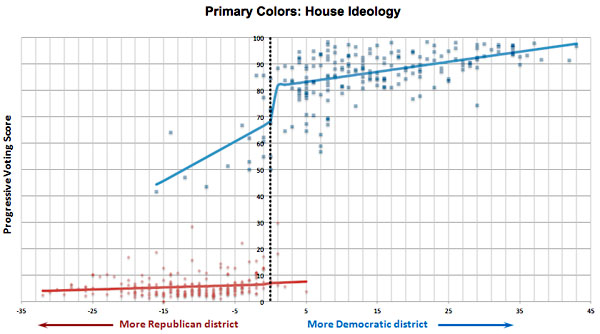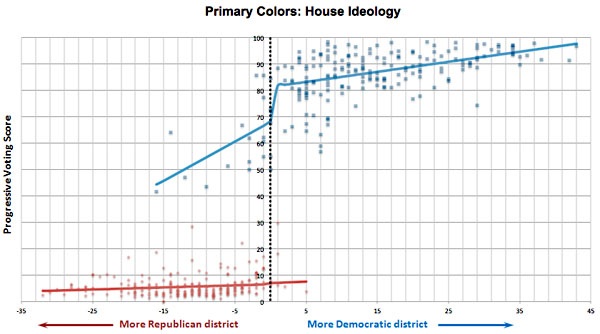
Here’s an interesting chart from Ryan O’Donnell. It shows voting patterns for members of Congress based on what kind of district they represent. Among Democrats, as you’d expect, their voting records become more progressive as their districts become more strongly Democratic (blue line). What’s more, there’s a sharp break at zero. When a district becomes even slightly majority-Democratic, voting records become sharply more progressive.
But you see nothing of the kind among Republicans. The red line is nearly flat. There’s virtually no difference in their voting records regardless of how strongly Republican their district is. Even when they represent moderately Democratic districts, it doesn’t matter. They still vote monolithically conservative.

Now, it’s possible that this is merely an artifact of Republicans being the out-of-power party. When you’re faced with a president of the opposite party, maybe it’s just easier to maintain a united front of obstruction. Someone could shed some light on this by creating a similar chart for 2001-06, when it was House Democrats who were facing a president of the opposite party.
But I suspect that’s not it. Or at least, not the whole story. Modern Republicans are both more cohesive and more ideological than Democrats (virtually none have a progressive score above 20, while lots of Democrats have scores below 80). Nor do they pay a price for this. Voters in pinkish districts don’t seem to mind electing members of Congress with strongly red voting records. I guess they figure that as long as they vote against higher taxes, it doesn’t much matter if they waste time on lots of symbolic sops to the tea party.
Could Democrats in light bluish districts act the same way? They sure don’t seem to think so. Comments?















